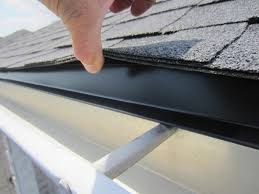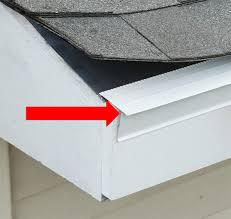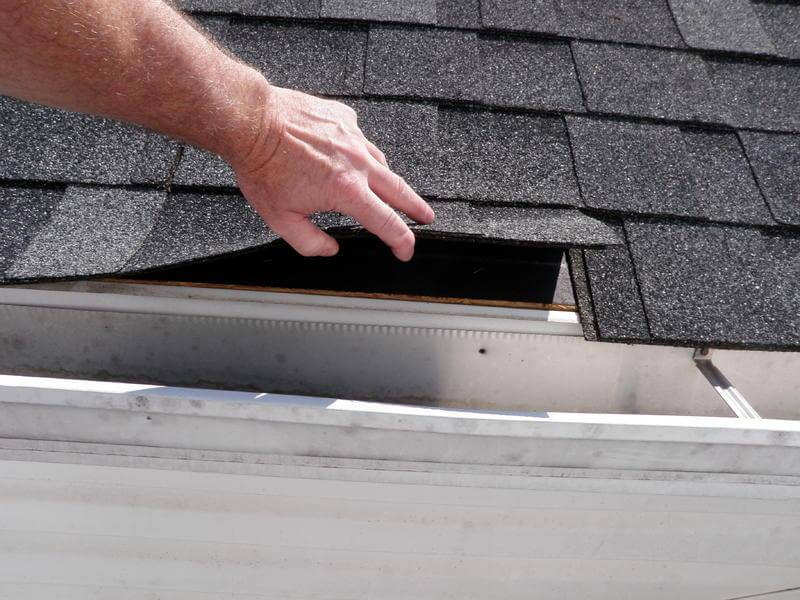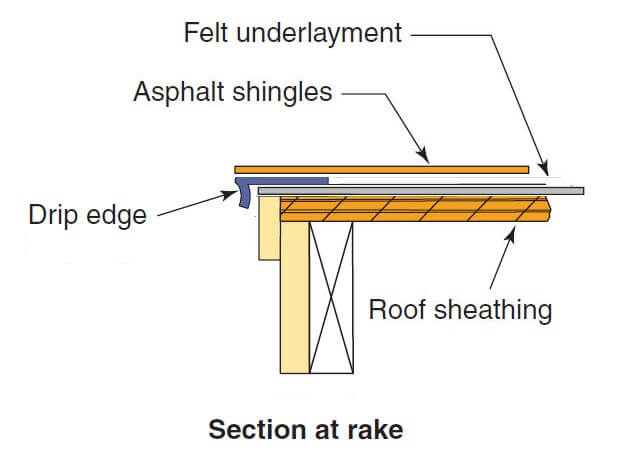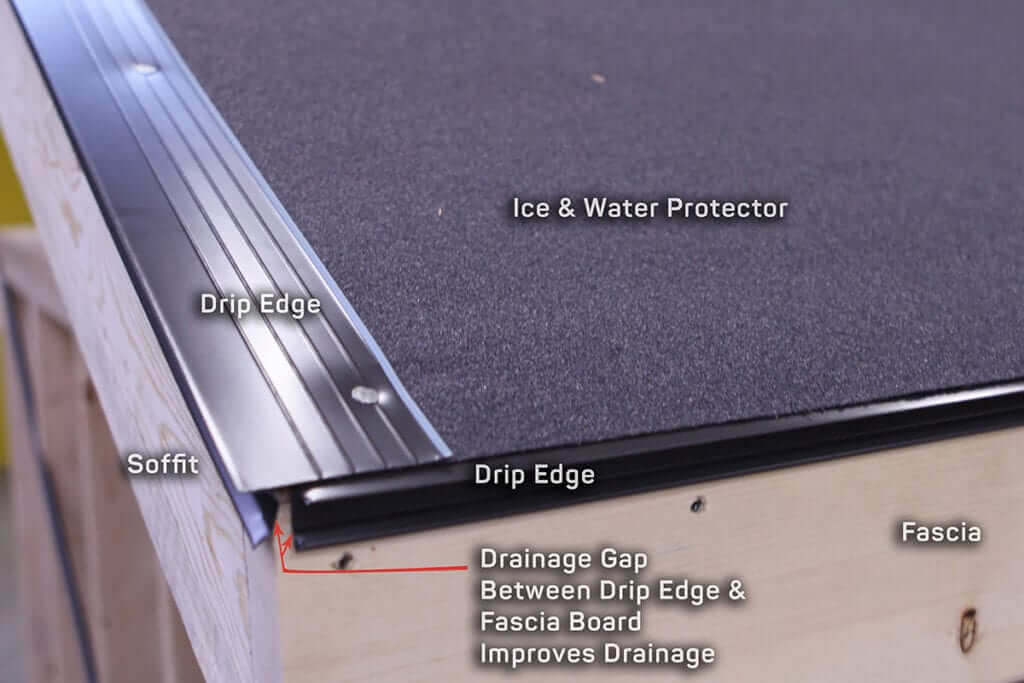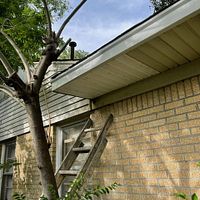Does Your Roof Have Drip Edge?!
Did you buy a new construction home or a home that was built before 2002?!
I say 2002 because that is around the time when code enforcement started requiring new construction to install drip edge when building a home. Now everywhere has its own code enforcement rules they follow, but in Shelby County, they follow the 2003 International Building Code. Section 1567.3.p requires an ice and water shield in roof valleys and drip edge on eaves and rakes of the roof. So how do you know if you have it or not?!
It’s quite simple, take a ladder and lift up the shingles at the edge of the roof. If you see something like this, you do not have a drip edge.

What Is Drip Edge?
A drip edge is a metal flashing that is installed at the edges (rakes and eaves) of the roof to help divert the flow of water away from the fascia and to protect the underlying roofing components called sheathing or also known as decking. Drip edge overhangs the sides of the edge of the roof. It has a small metal lip that is bent away from the fascia. It is non-corrosive and non-staining so that your roof looks good but is structurally stable.
The drip edge is often replaced when new shingles are installed, but it can be replaced at any time. Asphalt roof shingles can become brittle in cold weather, so wait until a warm (but not hot) day to remove and replace drip edge.
Reasons to Install Drip Edge
- Directs water away from the fascia and prevents water from rotting the fascia over time.
- Protects the edge of the decking due to water penetration during driving rains.
- Drip edge seals any gaps at the bottom of the roof. There is often a gap between the decking and the fascia which gives small animals an opportunity to enter the attic.
- Helps protect the bottom of the roofline during ice dams that can occur during the winter months.
- Prevents movement between fascia and deck boards.
- Assists gutters to direct water away from your house and foundation.
- Extends the longevity of your roof and improves the overall effectiveness of your roof system.
How Drip Edge is Installed
The eaves are the most essential place for drip edge. Roofers should also install drip edges on the rakes of a home. The most important requirements that roofing contractors need to follow are:
- The drip edge should have high resistant to corrosion
- Apply the drip edge to the deck along the eaves
- Place the underlayment over the drip edge
- If on the rakes, apply the drip edge on top of the underlayment to ensure that the rainwater driven by the wind doesn’t reach the deck
- Nail the drip edges to hold them at place
Normally drip edge covers the gap of 2 inches, it is, however, possible to custom-make a drip edge for a bigger gap that extends from 4 to 6 inches under the shingles and 2 inches down over the fascia. When shingles are being installed, the roofing contractor should make sure that they extend about ¾ of pinch to ensure proper flow of water.

In The End
Drip edge is an important part of a roof system. The drip edge helps waterproof the structure by pushing water away from the home and protecting the underlying wood also known as the sheathing (decking) and fascia. A drip edge also helps close off gaps that help keep animals out or being able to chew and claw at the space. It also provides an attractive finishing touch to the roof. Considering the many benefits of drip edge, homeowners should ensure that the roofer installs adequate drip edge to give the home low-cost yet effective protection. Ignoring the inexpensive drip edge installation could reduce the long-term value of the house, and the homeowner might discover the side effects after several years. As mentioned before, a drip edge is usually installed when a roof is installed, but it can also be installed afterward. If you notice that you don’t have a drip edge or just recently had a roof installed and the roofer did not install drip edge. Fill out our free estimate form and let us know that you would like an estimate on drip edge installation.

